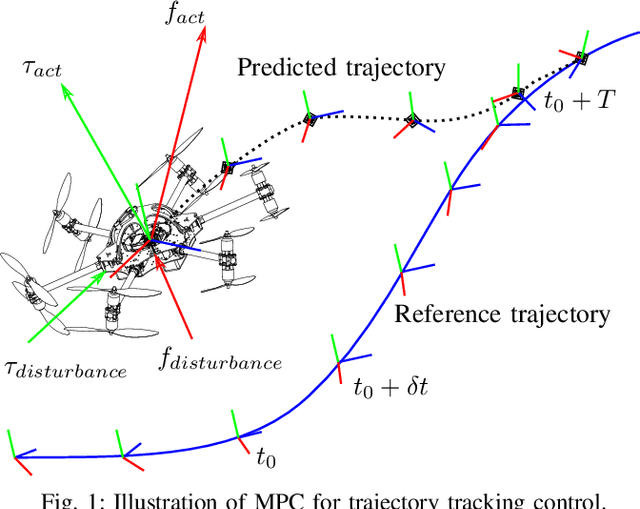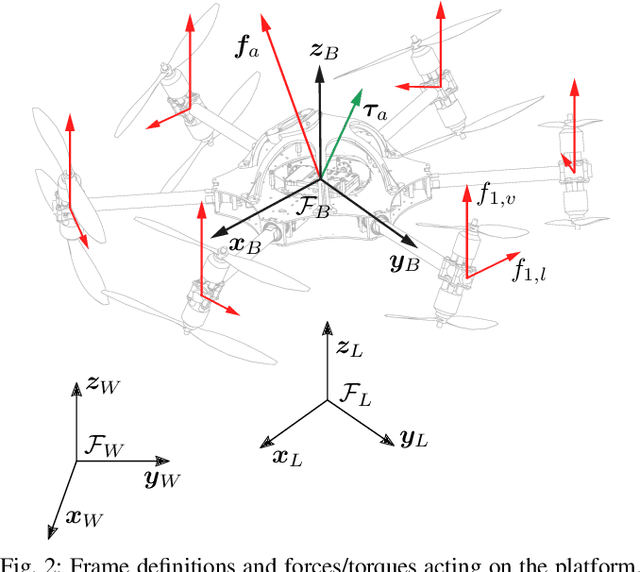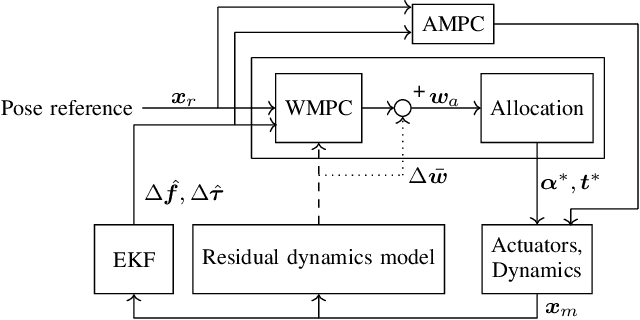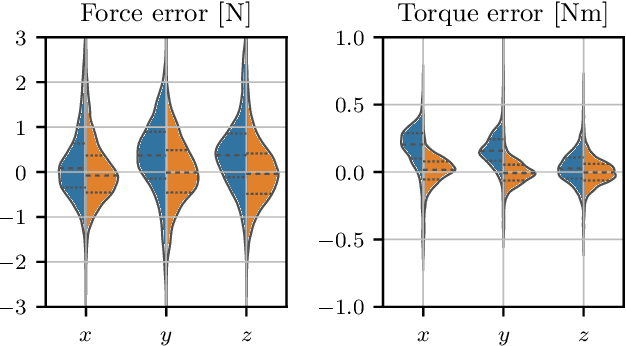Ahmad Roumie
MPC with Learned Residual Dynamics with Application on Omnidirectional MAVs
Jul 04, 2022



Abstract:The growing field of aerial manipulation often relies on fully actuated or omnidirectional micro aerial vehicles (OMAVs) which can apply arbitrary forces and torques while in contact with the environment. Control methods are usually based on model-free approaches, separating a high-level wrench controller from an actuator allocation. If necessary, disturbances are rejected by online disturbance observers. However, while being general, this approach often produces sub-optimal control commands and cannot incorporate constraints given by the platform design. We present two model-based approaches to control OMAVs for the task of trajectory tracking while rejecting disturbances. The first one optimizes wrench commands and compensates model errors by a model learned from experimental data. The second one optimizes low-level actuator commands, allowing to exploit an allocation nullspace and to consider constraints given by the actuator hardware. The efficacy and real-time feasibility of both approaches is shown and evaluated in real-world experiments.
 Add to Chrome
Add to Chrome Add to Firefox
Add to Firefox Add to Edge
Add to Edge